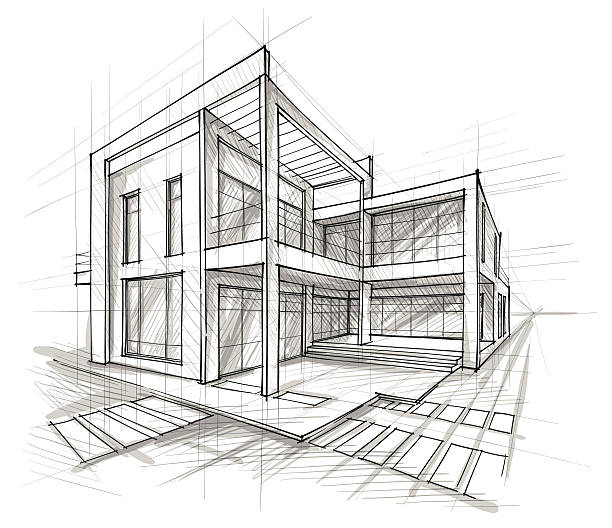Recognizing the Collaborative Refine Between Architects and Designers in Modern Building And Construction Projects
The collaborative procedure between designers and designers is essential in modern-day construction projects, as it harmonizes design intent with engineering feasibility. Discovering these characteristics reveals insights that can considerably impact task outcomes and general market requirements.
The Importance of Partnership
The collective harmony in between engineers and designers is essential for the effective awareness of any type of building job. This partnership brings together distinctive know-how and perspectives, allowing the combination of ingenious design with sensible engineering services. By collaborating, designers and engineers can ensure that a project not only fulfills aesthetic and practical needs yet additionally abides by safety, sustainability, and financial restraints.
Partnership fosters a shared vision, promoting the placement of objectives and expectations from the outset. This alignment is critical in resolving possible obstacles and mitigating threats that could develop during the project lifecycle. Moreover, a collaborative approach enables for the effective allowance of sources, optimizing both time and price.
The importance of collaboration includes the repetitive procedure of design and construction, where feedback from designers can notify architectural decisions, leading to even more practical and sustainable designs. Alternatively, engineers can motivate designers to believe creatively concerning just how to accomplish structural honesty without jeopardizing creative intent. Ultimately, the joint connection between engineers and designers is not merely beneficial; it is basic to the development of top quality, useful, and ingenious built settings that satisfy the needs of culture.
Communication Techniques and Tools
Efficient interaction techniques and tools are crucial for fostering partnership in between designers and designers throughout the project lifecycle. Establishing clear channels of communication is vital to make sure that all group members are straightened with task goals, timelines, and duties. Routine conferences, both in-person and digital, offer chances for stakeholders to review progression, address problems, and make informed decisions.
Utilizing task monitoring software application, such as BIM (Building Details Modeling) platforms, enhances partnership by making it possible for real-time sharing of style alterations and technological specs. These devices promote transparency, enabling engineers and designers to picture adjustments and assess their influence on the total task.

Shared Goals and Project Vision

Establishing common goals entails open discussion and a thorough understanding of each self-control's contributions. Designers typically focus on style intent, spatial connections, and individual experience, while designers highlight structural stability, systems performance, and compliance with regulations (cda architects). When these viewpoints are lined up, the result is a cohesive task that adheres to both imaginative ambitions and technological usefulness
Moreover, a well-defined project vision promotes responsibility amongst staff member, motivating each individual to take ownership of their role in accomplishing the preferred outcome. Regular check-ins and collective workshops can even more reinforce this dedication, enabling adjustments to be made as the task evolves. Inevitably, a common vision not just improves synergy however likewise boosts the quality of the last deliverable, resulting in effective project conclusion.
The Role of Modern Technology
Leveraging modern technology has come to be crucial in enhancing partnership between architects and engineers. Building Information Modeling (BIM) stands out as an essential modern technology, enabling both architects and designers to create in-depth 3D designs that encapsulate style intent and structural honesty.
Furthermore, cloud-based systems enable blog here seamless cooperation, allowing task stakeholders to accessibility and upgrade job information from anywhere. This cultivates a society of openness and responsibility, as modifications can be tracked and examined in real-time. Additionally, mobile applications additional improve interaction, providing on-site groups with instant access to task specs and updates.
Arising modern technologies such as expert system and artificial intelligence are also starting to play a role in predictive evaluation, helping groups recognize potential concerns before they emerge. Eventually, the duty of innovation in architecture-engineering cooperation not only enhances operations effectiveness yet also boosts technology, resulting in more successful job outcomes. By accepting these technical developments, engineers and engineers can guarantee an extra natural and productive collective process throughout the building and construction lifecycle.
Instance Studies in Effective Collaborations
Countless study highlight the extensive influence of effective collaborations in between engineers and designers on task outcomes. One noteworthy example is the cooperation on the High Line in New York City City, where landscape architects, designers, and metropolitan coordinators functioned with each other to change a deserted rail line right into a vibrant public park. This multidisciplinary strategy not only improved the visual high quality yet likewise ensured architectural safety and security and environmental sustainability.
Another exemplary case is the style and construction of the Sydney Music Hall. The partnership between architect JÃ ¸ rn Utzon and structural designer Ove Arup exemplified ingenious analytic. Their partnership enabled the famous shell-like layout while resolving intricate engineering obstacles, inevitably leading to a classic building masterpiece.
The Burj Khalifa in Dubai better shows the importance of joint initiatives. cda architects. The integration of style and engineering competence allowed the job team to achieve unprecedented elevations while adhering to safety and security laws and aesthetic vision
These instances underscore the significance of interaction, depend site here on, and shared goals. In today's intricate building setting, such partnerships are important to navigating obstacles and delivering jobs that meet both practical and visionary objectives.
Final Thought
In final thought, the partnership in between engineers and engineers is necessary for the success of contemporary building and construction jobs. Efficient communication methods, a shared task vision, and the combination of advanced technologies are critical elements that facilitate this collaboration.